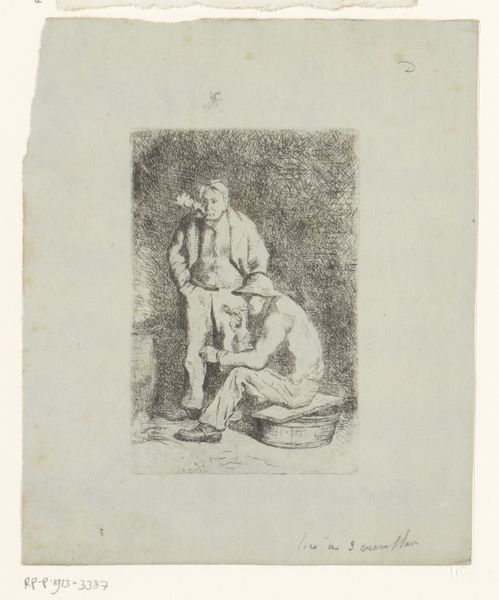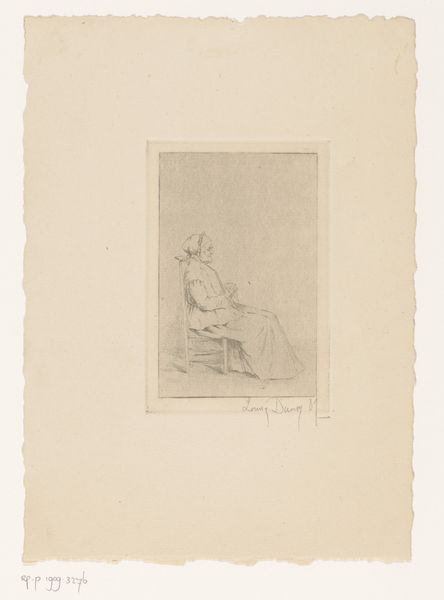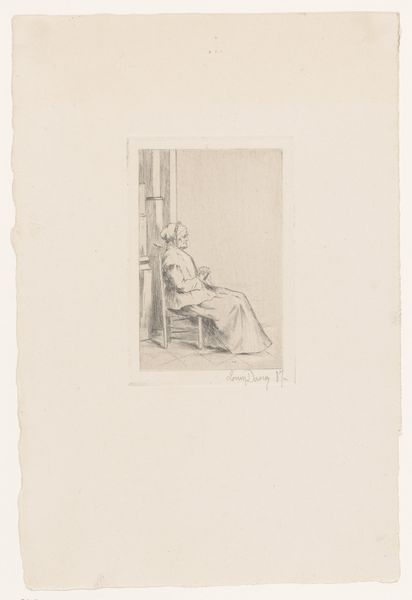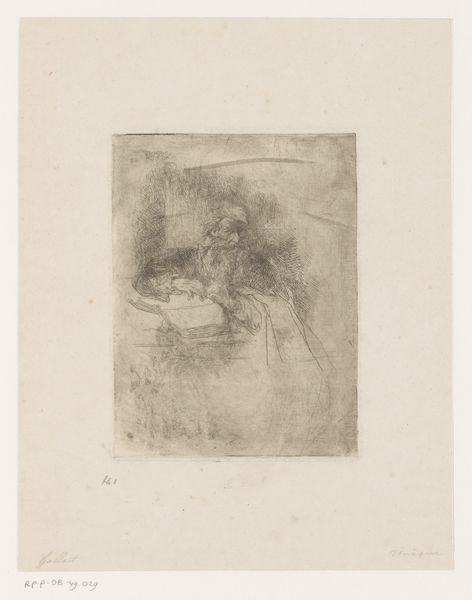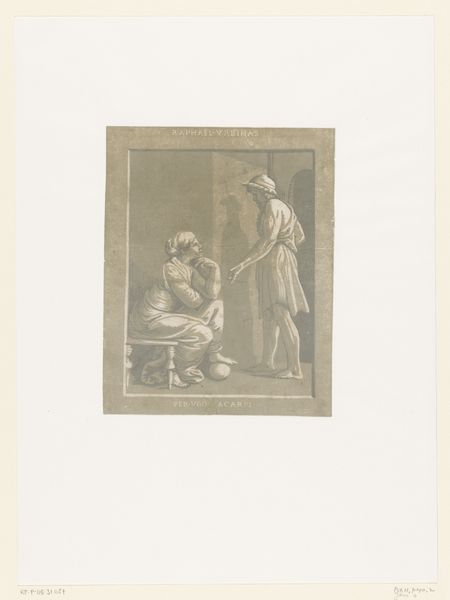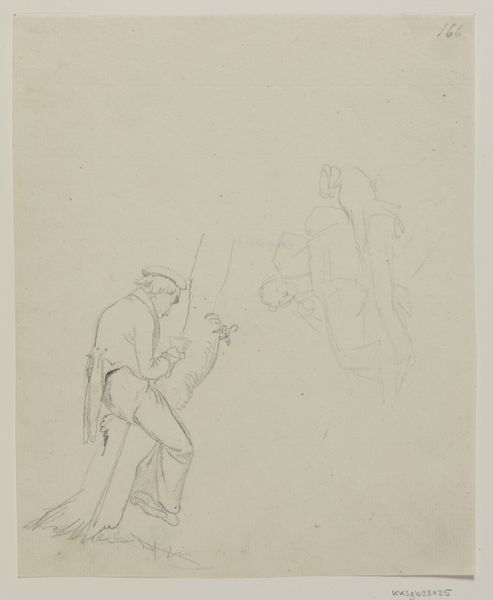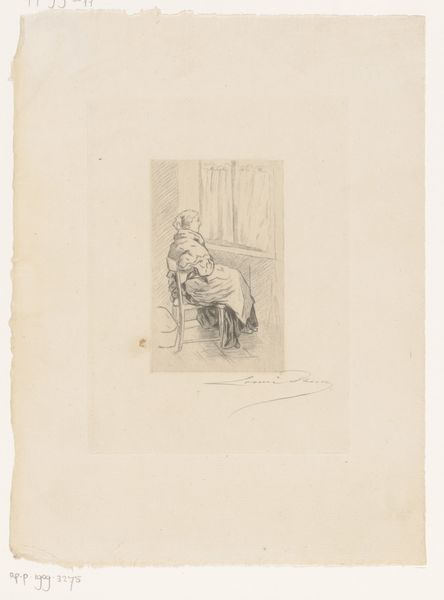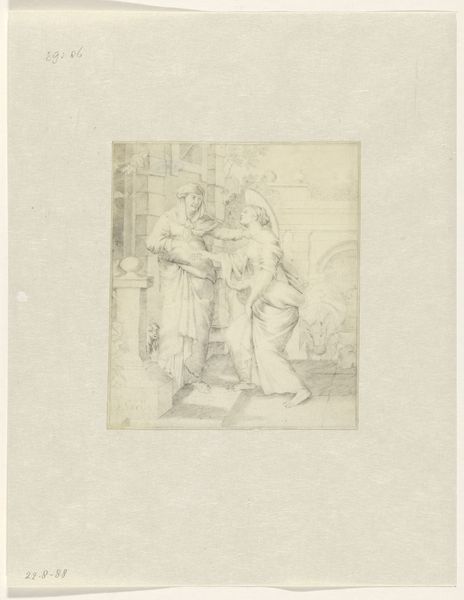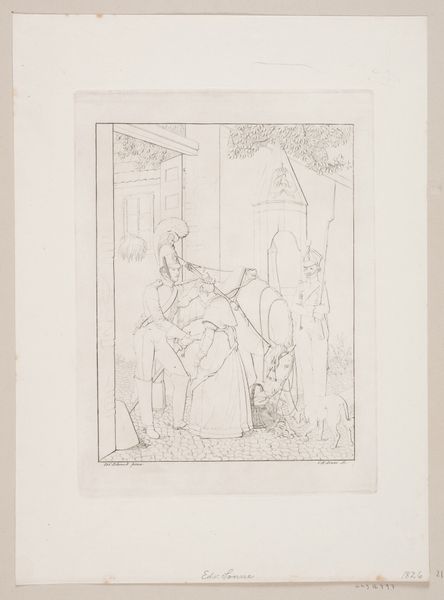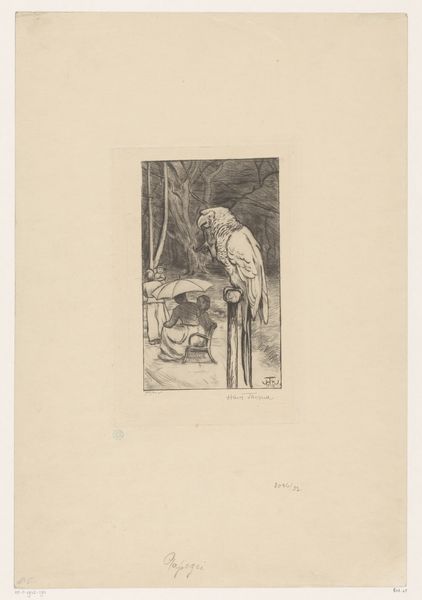
#
personal snap photobooth
#
light pencil work
#
wedding photography
#
pencil sketch
#
old engraving style
#
retro 'vintage design
#
personal sketchbook
#
ink drawing experimentation
#
pencil work
#
celebration photography
Dimensions: height 299 mm, width 249 mm
Copyright: Rijks Museum: Open Domain
Editor: What a poignant image. It's immediately striking how vulnerable the kneeling figure appears, rendered so delicately with these light pencil strokes. Curator: Indeed. What you're sensing is likely born from the narrative itself. This is a pencil drawing by Lodewijk Schelfhout, titled "Verloren Zoon," or "Prodigal Son," created in 1923. The scene depicts the famous biblical parable, a father's unconditional love embodied in line. Editor: I am really interested in the way this Biblical scene seems to be contained. The lines are very delicate but do create a sense of confinement. Was this piece made for private devotion perhaps, given its relatively intimate scale? Curator: That’s a very astute question. I think to truly appreciate this piece we should analyze the kind of materials at play. Notice how much the starkness of the medium -- a humble pencil and paper -- amplify the raw emotion conveyed. Editor: Exactly. A choice far removed from the opulent commissions we often associate with religious art of the time, or even today. The economic realities post World War I surely impacted artistic production as well. Could you elaborate on its possible relationship with some social or political contexts, its time and possible reception? Curator: Certainly. While Schelfhout engaged with Symbolism, and spiritual themes run throughout his work, it’s crucial to examine how the church's shifting cultural status began to alter such art being produced at that moment in Dutch history. It moves us further from established institutions. The work speaks to the individual experience of faith, presented for personal consideration in a changed post-war, secularizing society. Editor: And the relatively low-cost production makes art accessible... a form of democratisation even in such sombre times. Curator: Precisely. Considering that context gives this image added layers. Editor: Well, after diving into its themes of forgiveness and reconciliation, rendered so accessibly, I appreciate Schelfhout's piece even more now. Curator: I completely agree. The power of material limitations forcing creativity always enhances a piece. It gives food for further thought about art's role as a personal expression amid wider social transformations.
Comments
No comments
Be the first to comment and join the conversation on the ultimate creative platform.
